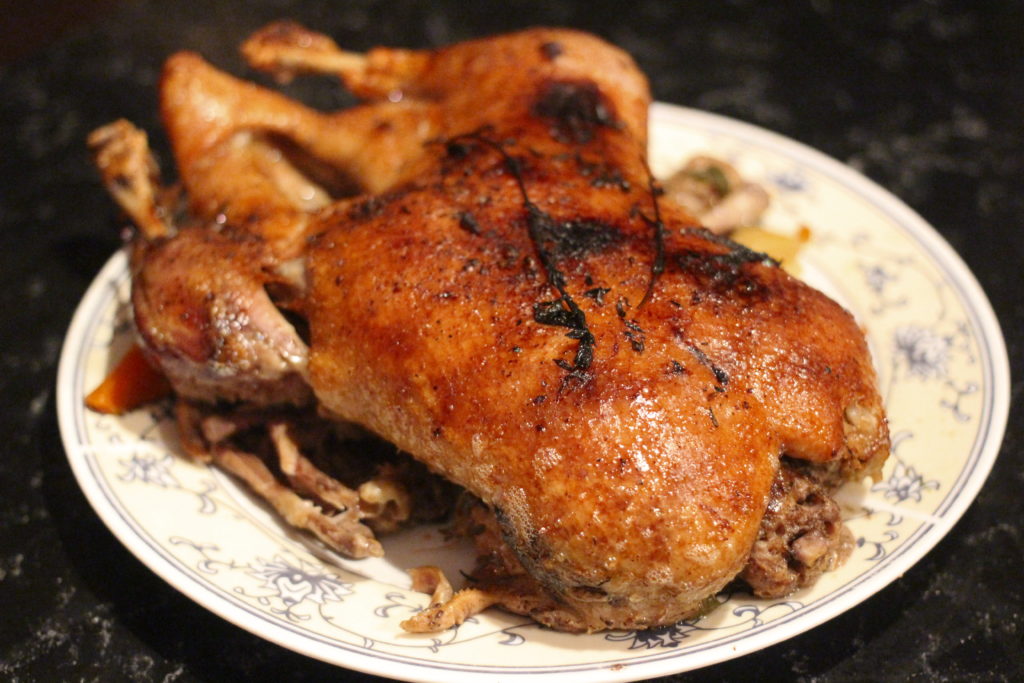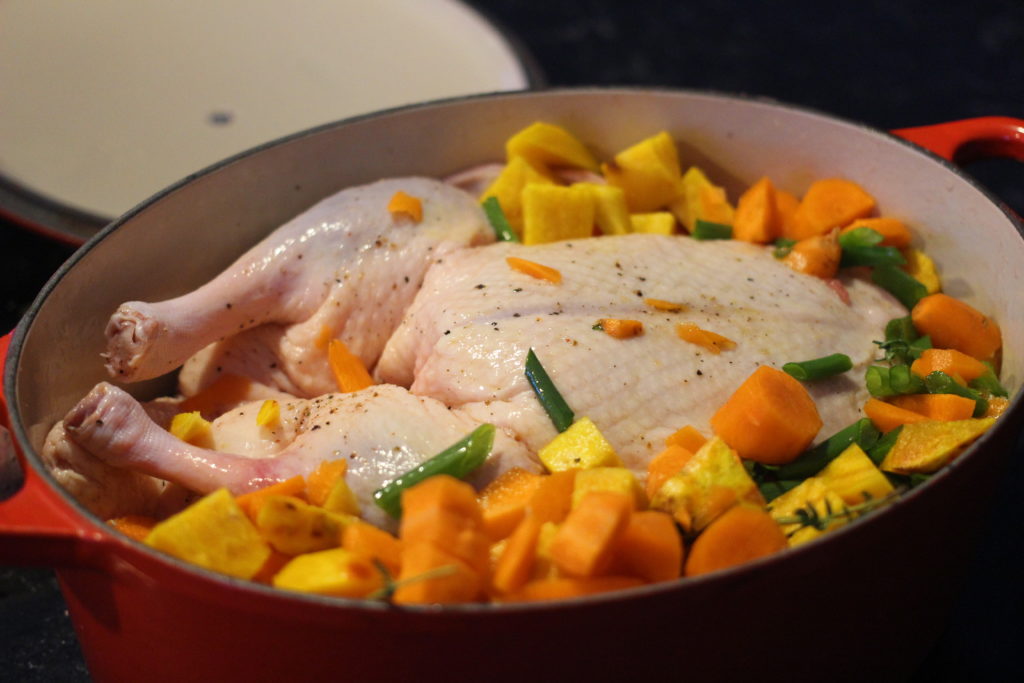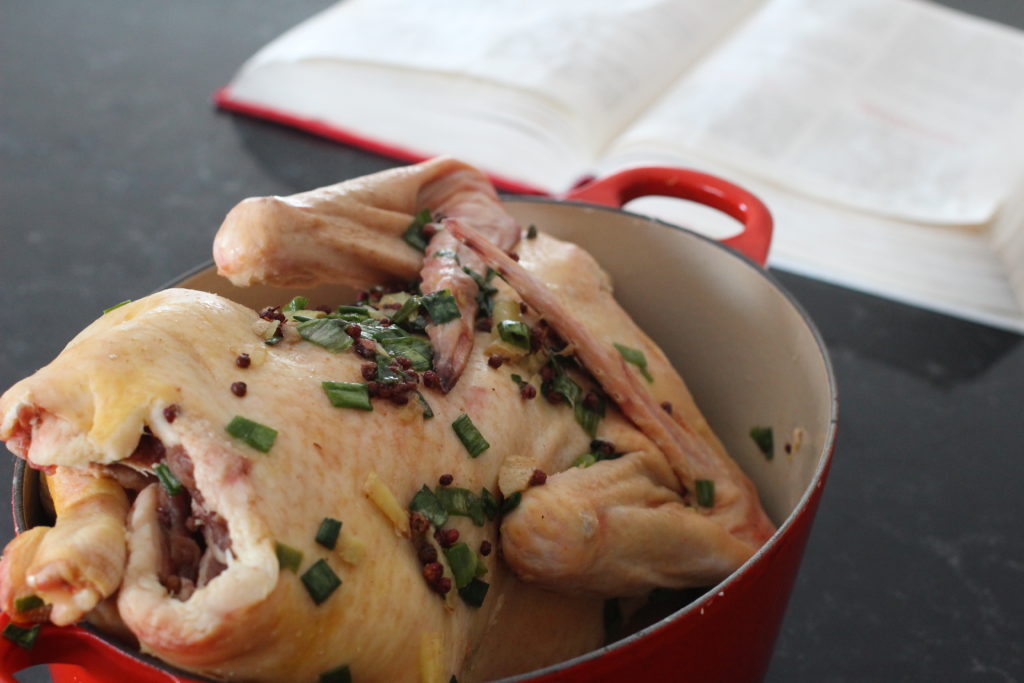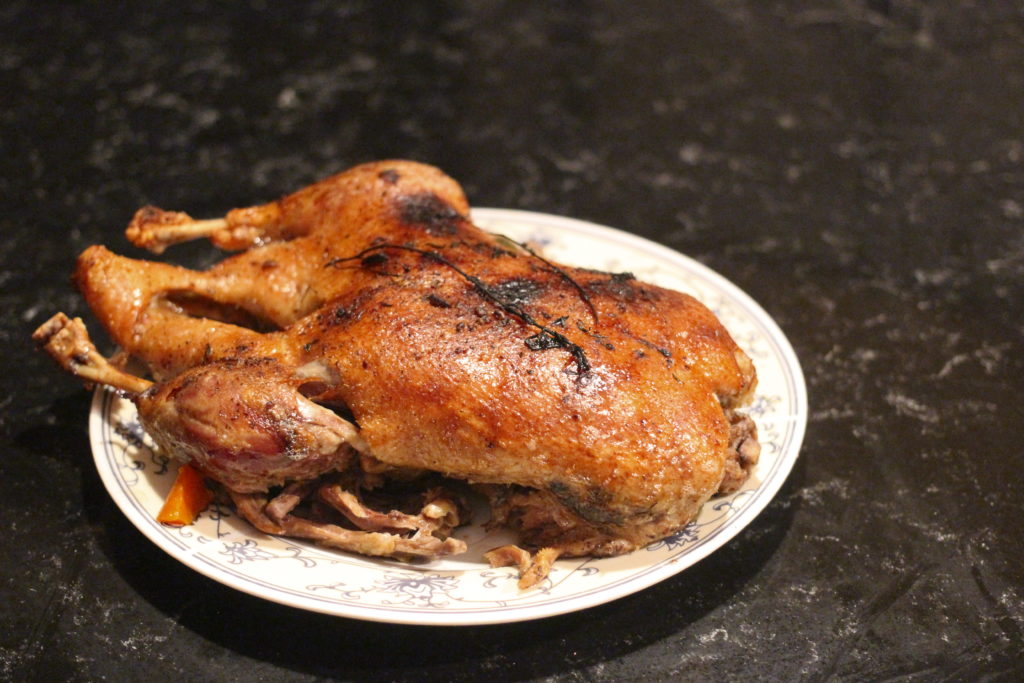
Don’t let your eyes fool you. This was not an awesome roasted duck.
It was my first one (see #2 below) and while it looks awfully pretty, what you don’t see is the thick layer of un-melted fat under the crispy-skinned exterior. So when you crunch into it, instead of getting a mouthful of luscious deliciousness, you get gelatinous muck above tender flesh. Not ideal.

I used a recipe from The Essential New York Times Cookbook, which rarely leads me astray. Alas, this time was not to be.
In the book’s duck-cooking primer (because there are a handful of whole duck recipes), various methods for cooking the waterfowl whole are explained. One way is to marinate, then steam, then crisp the duck. Another is to roast it like turkey. Apparently you don’t want to just roast the duck for awhile. Better is to start it at high heat and then reduce it. The first recipe in the duck section calls for you to do just that, but the duck doesn’t marinate or brine at all, which as someone who’s roasted a lot of Christmas and Thanksgiving turkeys, made me skeptical.
But I followed the recipe to the letter. And while the meat was incredibly tender, it had very little flavour. Salt couldn’t get in there fast enough. With a good sauce, the meat was fine, but I might as well have made chicken, I felt. And what a waste of fat, getting stuck under the skin where it wouldn’t render!
Not to be dismayed, I tried again.

This time I followed the recipe for Steamed and Crisped Duck, which editor Amanda Hesser says, “produces the consummate crisp and succulent duck.” I marinated the duck with some star anise, ginger and shallots, a tiny bit of rice (what’s a tablespoon going to do?), a bunch of salt some Sichuan peppercorns and then steamed it.
Except the duck was again not amazing. Tender? Yes. Crispy? Only in parts that touched the pan. But most importantly, flavourful? No.
The marinade wasn’t strong enough and again didn’t very well season the meat. I steamed the duck the next day and then crisped the legs and breasts in a pan, but it was still bland. Plus, the fat got stuck under the skin again, remaining un-rendered, and the skin crisped unevenly in the pan since you have to keep turning it. At least that doesn’t happen with roasting (except the bottom, which does need to be crisped afterwards.
My next try will involve cutting through the skin in lots of places so the fat can drain out more easily, which I’ve read is good, like when you cross-hatch the skin of the duck breast to sear it. But in this case it’d be cross-hatched or cut into all over. The trick will be to keep it moist this way.
The upside of this adventure is that I have 3 cups of duck fat in my fridge, but I didn’t buy two whole ducks just for the duck fat and some mediocre meat. In both recipes, the duck was incredibly greasy and off-putting and I’d wished I’d just made the Lemon Roast Chicken Recipe from Aimee Wimbush-Bourque’s cookbook from the blog Simple Bites. It’s a winner.
I have two more duck recipes to try from the New York Times Cookbook and then I’m throwing in the towel and just using the Simple Bites marinade on the duck.
On a lighter note, I’m getting lots of funny looks at my neighbourhood butcher shop at the Atwater Market when I buy two ducks at a time. They get awfully confused and I find it hilarious.

Leave a Reply